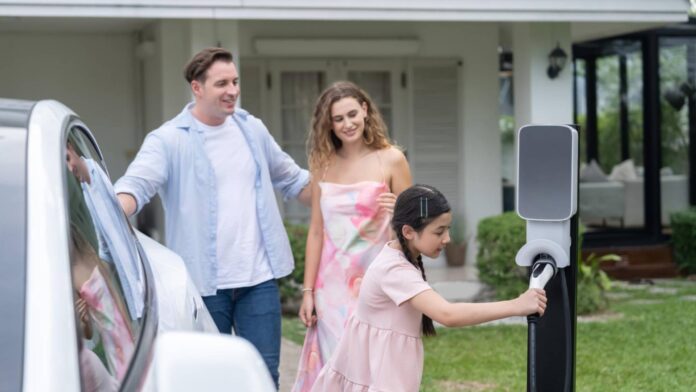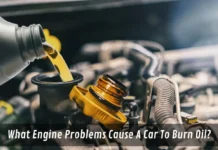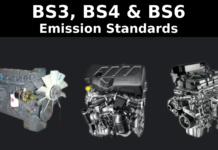As the world continues to embrace sustainable energy, electric vehicles (EVs) have rapidly become the future of transportation. With this shift, proper maintenance and care of Charging Your EV Battery is essential to ensure its longevity, efficiency, and performance. Charging your EV might seem like a simple task, but there are key do’s and don’ts that every EV owner should be aware of to avoid common pitfalls. Whether you’re a first-time EV owner or someone with experience, this guide will help you maximize your battery’s lifespan and get the most out of your driving experience.
Key Points
Do’s of Charging Your EV Battery

Charging your EV isn’t rocket science, but a few good habits can make a big difference. With India’s EV boom think Tata Nexon EV, MG ZS, and more know how to juice up right keeps your battery happy and your rides hassle-free. Here’s what to do:
1. Charge at the right temperature
Aim for moderate temps 10°C to 30°C (50°F-85°F) to charge efficiently. India’s summers can hit 40°C+, and winters can dip low in the north. Extreme heat cooks the battery, while cold slows charging and cuts range. Park in a garage or shade during heatwaves, and use your EV’s pre-conditioning feature in winter to warm the battery before plugging in.
2. Stick to the 20-80% rule
Keep your charge between 20% and 80% for daily drives. Why? It’s gentler on the lithium-ion cells, cutting down heat and stress. Most EVs like the Hyundai Kona Electric have settings to cap charging at 80%. Sure, go to 100% for a Mumbai-to-Pune trip, but for regular commutes, this range is gold.
3. Use certified charging equipment

Stick to chargers and cables blessed by your EV maker or stamped with standards like UL, IEC, or BIS (Bureau of Indian Standards). India’s market has its share of cheap knockoffs avoid them. Faulty gear can overheat or zap your system. A certified 7.4 kW wall charger from brands like Tata Power or Ather ensures safety and steady juice.
To further streamline your EV charging experience, consider using an EV locator. This handy tool helps you find nearby charging stations, ensuring that you’re never stranded without a power source. Whether you’re on a long road trip or just looking for a nearby charger, the EV locator provides real-time information about available charging points.
4. Charge during off-peak hours
Charge late at night or early morning say, 11 PM to 5 AM when India’s grid takes a breather. Electricity tariffs drop (think ₹5-7/kWh vs. ₹10-12/kWh peak), and you ease the load on creaky power lines. Bonus: some states like Karnataka lean on wind or solar at night, making your charge greener.
5. Monitor the process
Don’t just plug in and walk away. Check the charge now and then most EVs ping your phone with apps like MyHyundai or Tata Connect. Watch for odd noises, heat, or glitches. Stopping at 80% keeps the battery chill, and catching issues early (like a flickering charger light) saves you from bigger headaches.
Don’ts of Charging Your EV Battery

Charging slip-ups can ding your battery or worse. India’s diverse climates and patchy infra mean extra caution pays off. Here’s what not to do:
1. Don’t always charge to 100%
Hitting 100% daily is like overstuffing your stomach it wears out the battery faster. Lithium-ion cells don’t love being maxed out; it speeds up degradation. For your Delhi office run, 80% is plenty. Save full charges for that Goa getaway when you need every kilometre.
2. Don’t let it hit zero
Deep discharge stresses the cells, trimming lifespan. In India’s traffic jams say, Bengaluru’s infamous gridlocks a dead battery means a tow truck. Recharge at 20-30% to keep things smooth. Most EVs warn you at 10%, so don’t ignore the beep!
3. Don’t use damaged cables
India’s dusty roads and monsoon humidity can wreck gear fast. A dodgy cable risks frying your EV’s port or sparking a fire especially with our iffy wiring in older homes. Inspect regularly, and splurge on certified replacements from brands like ChargePoint.
4. Don’t charge in extreme weather unprepared

Monsoons in Kerala or heatwaves in Rajasthan can mess with charging. Use weatherproof setups (IP54-rated or higher) and avoid storms lightning’s no joke. In summer, ventilate the charging spot; a garage fan can stop the battery from sweating too much.
5. Don’t over-rely on fast charging
Fast chargers (50 kW+) at highway stops are lifesavers, but they’re not for daily use. The heat they generate especially in India’s warm climate cooks the battery over time. Stick to slow AC charging (3.3 kW or 7.4 kW) at home. Use DC fast chargers sparingly, like for a quick boost on the Chennai-Bengaluru expressway.
Conclusion
In conclusion, charging your EV is more than just plugging it in. By following the do’s and avoiding the don’ts, you can ensure that your battery remains in top condition, providing you with efficient and reliable performance for years to come. So, remember to stay mindful of your charging habits, make informed decisions, and watch your electric car take you further with every journey. Sustainable driving starts with the right care treat your EV battery well, and it will treat you well in return.
Frequently Asked Questions (FAQs)
Q1. Can I charge my EV during a power cut?
No, you need a steady flow. Got solar panels or a generator? You might hack it check your setup’s specs first. In India, power backups are clutch during outages.
Q2. How long does charging take in India?
Depends on your gear. A 7.4 kW home AC charger takes 6-8 hours great for overnight. A 50 kW DC fast charger hits 80% in 30-60 minutes, perfect for a chai break on the highway.
Q3. Is it safe to charge in the rain?
Yes, with waterproof gear (IP54 or better). Monsoons are fine if covered, but skip thunderstorms safety first. Dry off wet plugs before juicing up.
Q4. How much does a home charge cost in India?
Roughly ₹6-10/kWh, depending on your state (cheaper in Tamil Nadu, pricier in Mumbai). A 30 kWh battery costs ₹180-300 beats ₹2,000+ for petrol any day!
Q5. Does fast charging wreck my battery?
Not instantly, but overuse heats it up, cutting life. India’s warm weather doesn’t help. Treat fast charging like masala chai occasional, not daily and you’re solid.








